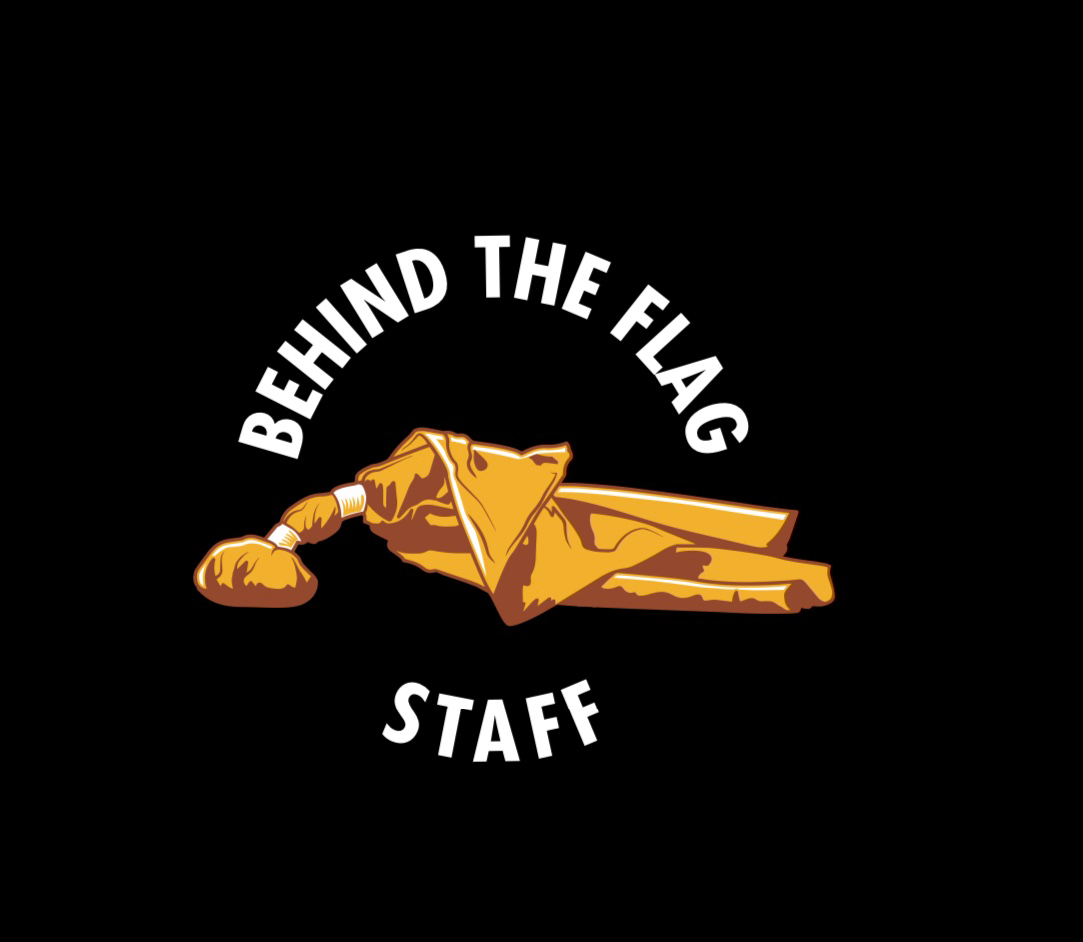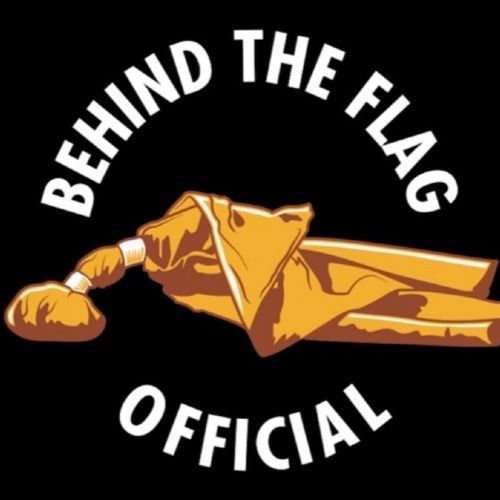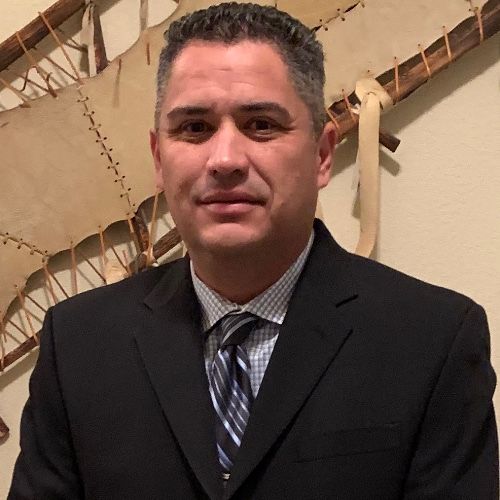GET IT RIGHT
Get It Right
Dennis Barela (1s):
Tonight we have, um, GET IT RIGHT and we're going to be going over pylon plays tonight for about 45 minutes or so Bob, if everyone can see my screen, last summer at front range Bob gave a presentation on this software and gave a pretty good class on goal line plays, which sold me on this, on the software to use for individual training.
Dennis Barela (39s):
But just as a brief, introduction, Bob's been a high school official since 2001 in Alabama, and has also a deep three position in Alabama, officiated district and state championship, been a instructor since 2013, he started Get It Right program in 2012 and he was designated by NASO as a game changer for high school football for officiating. Here are some of the partners that have backed him and his program;
Dennis Barela (1m 15s):
front range, battlefields to ball fields, and TASO.,
Bob Arnone (1m 29s):
Yeah,
Dennis Barela (1m 30s):
GET, IT RIGHT and all 50 States and 15 different countries. So I reached out to Bob who days go and ask them if he would be willing to give us a training session on the pylon plays to high school officials in New Mexico. And he was gracious enough to accept imitation and, and give us some of his, his, um, valuable time at night. Uh, is Dana on this? Yep.
Bob Arnone (2m 0s):
Dana, you want to say, if you want to say a few words, Dana. Um, yeah, but you have the floor.
Dana Pappas (2m 9s):
Um, nothing really, other than I just wanted to say thank you to Bob for his willingness to run through his presentation with you all. And I'm, I'm just going to sit here and probably take some notes and certainly if I think of anything I'll chime in Bob, thank you very much.
Dennis Barela (2m 26s):
Thanks Bob. I'm gonna go ahead and stop sharing my screen and the floor is yours. Okay.
Bob Arnone (2m 42s):
Okay. So we're going to get into the whole issue with a pylon simple little device sitting out there in the field, but, uh, it can drive you crazy sometimes if you're not watching out. Okay. So we start off with a positioning. Ah, so this is all listed in rule one dash two dash four. And you wanted to make sure that that pylon is sitting right there in that intersection of the sideline and the goal line about what I want to draw your attention to is what's happening back on the end line.
Bob Arnone (3m 16s):
And the Federation allows the pylon to be three feet off of the field, or it can be on the InLight itself. And, and What we'll do is we'll kind of scroll up here a little bit and you can see what those look like up there. Uh, so as a back judge, uh, lucidly here, uh, so as a back judge, I'll tend to watch for any time that those pylons are sitting up here, because what happens to you is imagine that there's a receiver that's running along that end line back there, and then he accidentally bumps into that pylon.
Bob Arnone (4m 2s):
And not it over according to two dash 21, two dash 29 dash one. That means that that player is now out of bounds. So now we have an illegal participation situation on our hands. So we really want to avoid that. So, uh, whoever winds up, putting those pylons out there, sometimes you just have dads there trying to help out and do their best. I always make it a point to move those pylons back off that end line, just to avoid anything like that.
Bob Arnone (4m 35s):
Uh, let's see you to get this thing to stop doing what it's doing there. Okay. Next thing I want to go to, I don't turn it off this pen. Uh,
4 (4m 51s):
<inaudible>
Bob Arnone (4m 59s):
Help me out here. How, how do I get rid of this?
Dennis Barela (5m 5s):
Um, I'm not sure how you got the pin to turn on, but there should be, um, a drop down box probably clicked with the graphics look better now than they did last year. Have you guys done improvement on it? It looks great.
Bob Arnone (5m 20s):
Yeah. Thank you. Yeah, we continue to try to, to make those kinds of changes at all. Okay. I hope that okay. That got rid of markings. Great. Alright. Okay. So let's go back to what's happening down here at the, uh, Down here at the goal line, and we'll just jump right over the goal line extended. So you've always heard about runners holding the ball out and break it a plane.
Bob Arnone (5m 51s):
Well, here's that plane that everybody talks about? Uh, so the goal line is actually a, the plane of the goal line is actually on the front edge of the goal line there. And then it kind of gets back to the positioning of the pilot. So there's plane runs right across the front face of that pilot. Uh, so that makes it important to have that, uh, Right there. And also the goal land extends out beyond the pylon.
Bob Arnone (6m 21s):
So this can become a little bit of a tricky play here that we need to watch out. And I'll just run this through a step by step where it was, see this runner, dive, dive out there. And what we'll be able to see is he's out past the sideline, but that ball is breaking the plane of the goal line and he hasn't touched a pile on yet. Uh, so we can go ahead and move around and, and look at this just to see the kind of angle that we would have just to prove that point.
Bob Arnone (6m 54s):
So you can see the ball down here. Well, and the goal line there, and it's outside the pylon, what's important and determine what's going on here is it, the player has got to maintain contact inside the field of play in order for this to be a touchdown. So that's something that you have to watch out for there, which is gonna hit and play that up. I'm going to put this on a comparison mode and what's your say on the Right is he's diving out there.
Bob Arnone (7m 32s):
So the balls break and the plane of the goal line on the right side there, but there's no part of his body contacting the field of play. So on the left, where we do have contact with the player, touching the ground ball, breaking the plane of goal line extended, we have a touchdown here on the left, over here on the right side, we're going to wind up spotting the ball, just short of the goal line there. And we just have to make an estimate where he went out of bounds.
Bob Arnone (8m 3s):
And then that's where we'll put it. We can put this on play through, we'll move over to the position about where that wing official would be. And this is what he's going to say. That's not gonna be an easy call. And because he's watching for that goal line, aye, he's watching for the fact that he's got, uh, you know, 200 pounds of runner coming his direction. What's he going to do so now this is a good opportunity to think in your mind, don't go calling touchdown or anything like that yet, and then start talking to some other officials.
Bob Arnone (8m 44s):
So it was a back judge, if I don't have any action going on over here, that, and I need to worry about <inaudible>.
Dennis Barela (8m 59s):
I'm sorry, go ahead, go ahead and mute your mic and turn your computer or cameras off please.
Bob Arnone (9m 11s):
And when that guy goes to dive, where I can help as a back judge, if I'm on pro turf, maybe I'll be able to say some of those pellets flying up there, or if I'm on natural grass, you know, we may want to go over there and talk to that wing official and look to see if there's any markings there and the dirt to determine whether or not you had a body part in the ground or not. So this is a good opportunity to work on your crew to make communications as well.
Bob Arnone (9m 42s):
One of the advantages that I Get It Right offers is really kind of playing out now in the situation that we all are in, that we can't get out there. I watch those spring practices participate in those scrimmages. Uh, so now you can get in some reps and see some of these situations you're really kind of tough to handle in real life anyway. So it gives you the opportunity to train your brain on what you need to be looking for.
Bob Arnone (10m 14s):
Let's go back to the pylon discussions here And again, the position up pile line. And it does two things. Number one, It establishes that a plane of the goal line, but it's also out of bounds. So you can have a situation here where that player is diving. You can see that as how much going to hit the pylon. The ball is tucked in up under his belly there, and then he hits the pilot.
Bob Arnone (10m 46s):
So at that point, uh, he's considered out of bounds. Uh, and then we had to make a determination of where that ball is. So that ball would be spotted again, shorter the goal line, back them up, what don't want to play through smooth move over to this wing position. So you can swing the camera. Something just happened to be there.
Dennis Barela (11m 17s):
Did you stop sharing your shot?
Bob Arnone (11m 20s):
Did it stop sharing? Yeah. And then let's find that screen share again.
Ken Adent (11m 30s):
Hey Bob, I love the graphic when you can clean and glass. It is so cool. Hey, your screens back. Does anybody have any questions right now while we're on the pause?
Bob Arnone (11m 45s):
Uh, say it again,
4 (11m 48s):
Just asking if any official questions while we're on a pause here. Okay.
Bob Arnone (11m 56s):
Okay. Yeah, one more. Okay. Okay. All right. So I have this. Am I going to know the shit who's up And I'll see you in the mind, or I think you're sharing your screen please.
4 (12m 27s):
<inaudible> <inaudible>
Bob Arnone (12m 51s):
Okay, good. Alright. We're going to get this play in. If it kills us here, let's go ahead. And now we got the wing officials, you, and then that's what he's going to see. So again, once that player contacts that pylon and he's considered out of bounds, and then we have to make a quick determination to determine where that ball is, the ball break the plane before he was out of bounds or not in this case. No. So we're going to go ahead and call that place, that ball shorter, the goal line Matter.
Bob Arnone (13m 28s):
And this is one that, uh, actually had happened to me a couple of years ago. I will get ahead and just kind of stepped through this one again, The the player is diving for that pylon. He's maintaining control of the ball. Now the ball is hitting that pilot. So two things happening there. Uh, the most important one is that ball is breaking the plane of the goal line. So that's going to be rolled to touchdown. Uh, even though the ball is also at the same time, going out across the, uh, other sideline there.
Bob Arnone (14m 5s):
So what's important here and what makes us different than go line extended here. As long as the ball is hitting that pilot line, we have ourselves a touchdown, even though that this guy is flying towards that, if he was trying to reach that ball outside the plan line, and then we'll dealing with what we were talking about for goal line extended And the comparison side And the RIGHT, you see that he's losing the losing control of the ball and you might, uh, and you know what happens, uh, if you lose control of the ball, going into the opponents, uh, and end zone, and then a ball hits the pylon and bounces on out.
Bob Arnone (14m 51s):
So now we're gonna, instead of a touchdown, that's going to be a touchback. And according to rule eight dash five dash three, Right actually eight dash five dash three. You see? So we'll go on and play through we'll move over here. What are selves generally in the position where that when official would be
5 (15m 15s):
Okay,
Bob Arnone (15m 25s):
And this is what they're going to say. So a lot of things, they just start going through that wing officials. Mine is that players coming towards that pylon, uh, what is he going to make? A lot of things is going to go through his mind there, you know, is he, is the player going to maintain control of the ball? Is he going to hit? The pylon is going to reach beyond the pylon. This is going to hit the Taiwan first, all those things are going to determine the outcome of that play.
Bob Arnone (15m 57s):
And then of course, if you've got your other crew that can help, uh, saying things from different angles, that's a good opportunity to communicate with them and make sure that, uh, uh, you call that play. Right. Okay. I'm going to, uh, show some quick changes that we did to the Get It Right program this year, uh, when we started off and we started doing all the roles in alphabetical order.
Bob Arnone (16m 29s):
So just like you're following an index in the rule book, that's one way that you can find a rule. A, we got a lot of it's more like w we had gotten a lot of requests about, uh, Hey, I need to give a class on the kicking game. Uh, which rules should I do? Well now you're trying to go through alphabetically and try to find what those are. Well, now we have the rule book view as we call it Right. So now we got all the 10 rules is laid out in the rule book there.
Bob Arnone (17m 1s):
And if you're giving a class on your kicking game, or if you just want to study the rules on a kicking game, and you go into rule six, you want to look at kickoff and other free text and section one, you go there, uh, you want to know what a popup kick looks like. You click on that, and it takes you right to the animation. And then here, you can see what that pop up kick looks like you to see books from there. We do the play through, and you have it for it.
Bob Arnone (17m 34s):
So those back judges or whoever you got up there on the on case rate, kick line, and then you have the opportunity to set up here, but put yourself in position of what that's going to look like and run that over and over and train your brain. So you understand what that, what that is it wasn't that quick hop. You got to call that bed. We did a comparison on this one, too. So on the right side, you're going to see the normal kind of pooch kick and kick it straight up into the air.
Bob Arnone (18m 9s):
And you can compare that what it looks like on the left or the pop up cake. So that's one of the benefits then of going into the rule book view. And then you can go back to the alphabetical view, whatever, whatever preference you may have, And those that, uh, and not seeing the program before we started off by building the mechanics module, uh, we started with crew sizes, have five and seven.
Bob Arnone (18m 40s):
And since that time we've expanded to three, four, five, 607 and understand that you all do a lot of five and for me, And so we can look at something like gold and going in most of the time when we're doing a training, we like using the bird's eye view, just because of, uh, It the way that it shows relative where all the officials are, where are they looking and what their field of focus on a beat, these green markers, tell you what your duties and responsibilities are at the beginning of the play at the snack, burn, the playing, and then what you do at the end, the quarterback.
Participant (19m 27s):
Oh, gentlemen.
Bob Arnone (19m 30s):
Yes, sir.
Participant (19m 31s):
Oh God. Uh, sir.
Bob Arnone (19m 38s):
Yes. Does that mean somebody have a question? Yes.
Participant (19m 41s):
Yes. Can you go, did you name a rule six and section one, correct? Right. Okay. I got it. I got IT go ahead and continue with, go ahead.
Bob Arnone (19m 53s):
Oh, okay. Um, okay. Now, one of the things that we tend to do when we're trying to teach new officials, uh, first of all, we gotta teach them not to watch the game, but then some of the language we use can sometimes be confusing. So what's going to happen in this play is to run. Who's going to go off to our RIGHT and we're going to tell The the wing officials over here, who's the, who's the linesman, uh, he's going to become the covering of fit. Shall we want him to have a tiger field of view and the line judge, over on the other side, he's going to do backside officiating.
Bob Arnone (20m 29s):
Uh, he needs to have a wider field of view. Well, when you're trying to say that to somebody new, what did they really hear? What did they understand? So what we do is we put those vision cones in motion. You can see how the crews functioning together and had to cover that play runners, coming to this side, you can see that vision come Get narrow for the linesman. And then the line judge has taken up this wider field of view.
Bob Arnone (21m 0s):
Now I can bring those back a little bit. And with this being and a three D mode, I can go over here and click on this line. And now we can save a play from his perspective on the field. And we have this spotlight effect around here that replicates what is happening with that vision count. So the runners coming here, you could see that a spotlight effect tightening up and kind of get into his mind that he needs to tighten up his field of you and watch us are coming in.
Participant (21m 32s):
Can you go to It
Bob Arnone (21m 35s):
Now we set this up that the runner did not score a touchdown. You just called this a little bit short, so you can watch this and a third person view, and then this is gold line going in. So we want the officials first move, going to the goal line. We can see what he's doing, he's short. So we sat on the call. And last year, when we changed to, uh, 42nd play clocks, we added in that, uh, you know, he's got the The ready going on there.
Bob Arnone (22m 10s):
So I'm the free camera. When we play this, you're going to see that the 42nd clock ahead and start to run it. So we got both the 45 and the 40 and the 25 second clock I implemented in the mechanics this year. And we did that last year. That's also synchronized with the game clock up there. I can privately click a couple seconds off and off of that. So everything is synchronized.
Bob Arnone (22m 40s):
Uh, and each one of these plates, we show a couple more positions on that plate. You can also go to your four man crew size, uh, when you're, what we use those for a lot of times is, and if you have to talk about the differences of who's doing what And a crew of four crew and crew second five on there, you can just toggle back and forth any place during the course of the play. And you can see what the, what the different positioning might be.
Dennis Barela (23m 16s):
Can you go back to that, Bob and show the view of the umpire on that crew of four versus five, please?
Bob Arnone (23m 26s):
Okay. And then we're going to start, we've got the glows are probably going to be about the same. Go ahead and let me see. We'll watch. Well, I can do this point. This is going ahead and turn all these guys off except for the umpire. And we can watch what he's looking at.
Ken Adent (23m 57s):
That's so cool. It is angled from the field view is his tunnel vision. There you go. There's no training...




